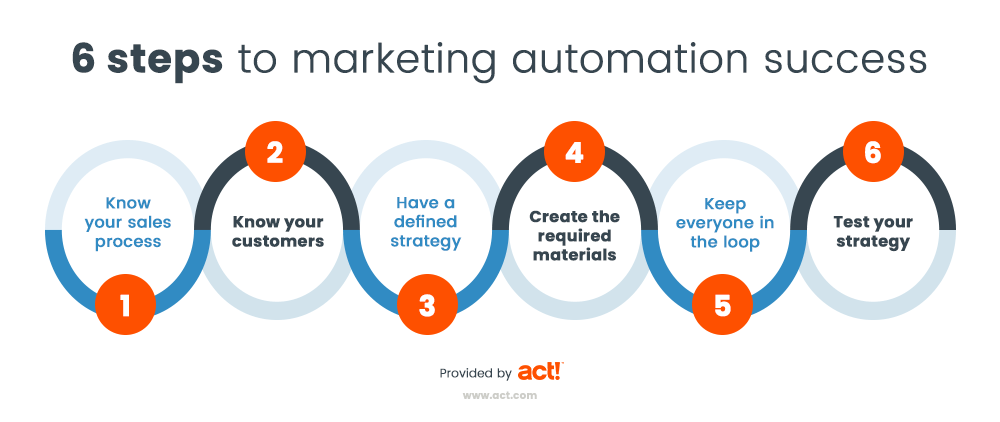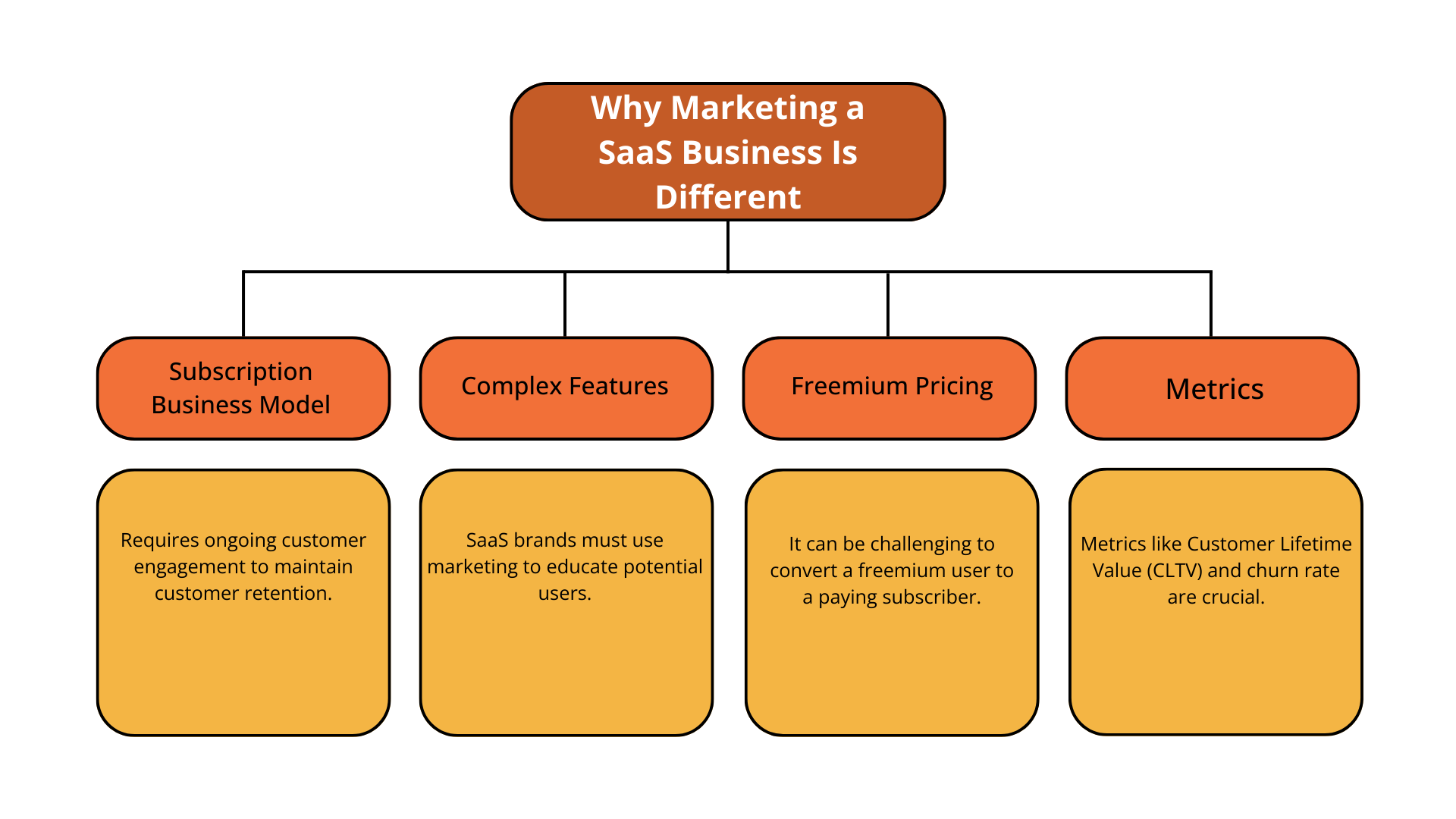Software as a service (SaaS) has solved many problems. Organizations can access the best tech without downloading, installing, or updating programs. SaaS also solved affordability problems; brands can pay monthly or annually for a subscription and cancel it when needed.
Now, technology is advancing even more. AI has become part of daily business operations and is especially useful when marketing a brand.
While SaaS is more important than ever, the industry is crowded. How can SaaS companies make their marketing campaigns more scalable and efficient? AI has been a game-changer in revolutionizing how brands attract and engage their audience, and SaaS companies are no exception.
With that said, keep reading to discover the top 27 tools our team uses to bring AI SaaS marketing strategies to life in 2024 and into 2025.
Key Takeaways on AI SaaS Marketing
- SaaS companies can use AI to personalize customer experiences, generate leads, predict customer behaviors, and automate workflows.
- There are countless AI SaaS solutions for social media and content marketing, SEO, and advertising.
- Each strategy has numerous AI tools that SaaS brands can use to optimize their campaigns.
- While AI unlocks opportunities, SaaS companies should remain transparent about their AI use and data collection practices.
TABLE OF CONTENTS:
Personalized Customer Experiences
69% of consumers appreciate personalization, but only when they consent to sharing their data. How can your brand achieve personalization while staying compliant?
AI SaaS marketing has a solution for that. Some platforms collect and analyze customer data, using this information to personalize content based on their customer profile, resonating with their interests. Depending on the data they share, personalization platforms can tailor content that addresses specific challenges and pain points, increasing the likelihood that they will convert.
How to Implement

- Customer journey: Map out the customer journey to understand which personalized content to deliver at every sales funnel stage.
- Dynamic content: Personalized content is at the core of an AI SaaS marketing strategy. Analyze user behavior and dynamically adapt content on your website or app. For example, display features that are most relevant to each visitor.
- Email marketing optimization: AI-driven email marketing platforms can use natural language processing to personalize subject lines and email content, plus track the best send times to boost open rates and engagement.
- Personalized recommendations: Lean on AI algorithms to suggest services or features based on past user interactions.
Metrics to Measure
- Customer lifetime value (CLV): Personalized customer communications can enhance customer loyalty and increase revenue by 10-40%. Track metrics such as CLV to ensure your AI SaaS marketing messages satisfy your buyers.
- Conversion rates: Personalized marketing strategies can increase conversion rates by 10-15%. Track your conversion rates to ensure the effectiveness of your tailored messages.
Tools to Use

- Adobe Experience Cloud: Adobe Experience Cloud is an AI SaaS platform that uses various integrated marketing tools to align your personalization strategy with different content and creatives, and it does so at scale.
- Optimizely: Optimizely is your all-in-one personalization tool. You can build your campaign and refine your strategies in real time, all in one place. Scale your strategy by connecting your data sources, using pre-built templates, and accessing a whole library of creatives.
- Mailchimp: Mailchimp can personalize every step of your email marketing process, from lead generation to post-purchase engagement. This platform has many segmentation features that allow you to tailor your email marketing strategy to every customer journey stage.
- HubSpot: As one of the most significant customer relationship management (CRM) platforms, HubSpot can collect, analyze, and store customer data in one place. HubSpot can integrate with various marketing tools so that you can apply this data to every part of your strategy.
Lead Generation and Scoring

Source: Selling Signals
Since 91% of marketers say lead generation is their number one priority, attracting more leads should be the primary goal for any SaaS company. But not all leads are created equal. AI SaaS tools identify and prioritize leads based on their likelihood to convert.
How to Implement
- Predictive lead scoring: Evaluate leads based on historical data and engagement levels. Use AI SaaS tools to track and assess data to score the lead.
- Chatbots and conversational AI: Implement chatbots to engage visitors in real time, gather lead information, and qualify prospects based on their responses.
Metrics to Measure
- Lead quality: Ensures that all your efforts and resources go toward sales-ready leads.
- Cost per lead (CPL): Every SaaS company should determine its cost tolerance toward leads and each channel it uses to attract them.
- Customer acquisition cost (CAC): Reflects the expenses of turning leads into customers.
Tools to Use

- Salesforce: Offers many sales and marketing tools to identify quality leads.
- Drift: Uses conversational AI and natural language processing to communicate with customers. It also includes sales pipeline software and future sales forecasting tools to attract more inbound leads and ensure they convert.
- Intercom: An omnichannel AI agent for SaaS brands that offers customer assistance and insights with automated workflows to send more proactive messages.
Social Media and Public Sentiment
Everyone knows social media is a pivotal part of a marketing strategy. But how have AI tools revolutionized how a brand markets on social media? AI SaaS solutions can gauge public sentiment, analyze your audience’s emotional needs, and identify negative trends. Public sentiment improves audience engagement since this technology provides deeper insights into customer behavior.
How to Implement
- Predictive analytics: Forecasts customer trends and identifies potential risks.
- Sentiment analysis: Monitors social media and online reviews to understand public sentiment so you can refine your messaging accordingly.
- Customer service: Monitor your social media channels and respond to customer concerns.
- Brand reputation: Scout various forums and review websites to discover public opinions about your brand, offering valuable insights into what your consumers enjoy and dislike so you can adapt to their wants and needs.
Metrics to Track

Source: Sprout Social
- Engagement rates: Comments, likes, and shares are all examples of audience engagement. This helps you understand customer intent.
- Brand mentions: Tracking brand mentions on social media, online, and on forums like Reddit is an effective way to gauge brand awareness.
- New followers: Measures the number of new followers you gain on a particular platform over a specific period. It can also be linked to a post or other social media event, such as a livestream.
- Reach: Represents the number of unique users who saw your social media content for the first time.
Tools to Use

- Brandwatch: An all-in-one suite to gauge your audience’s sentiment analysis and public perception.
- Google Analytics 4: Can track essential social media metrics like sessions, users, conversions, and engagements.
- Sprinklr: A social listening tool that collects and monitors your social media data.
- Sprout Social: All-in-one social media platform streamlining content, creatives, and post publishing. It also offers a visual representation of your sentiment analysis.
Optimized SEO and Content Marketing
Content marketing has always been an essential marketing tactic for SEO and lead generation; 63% of marketers say content builds brand loyalty. AI SaaS solutions make content creation more scalable and drive SEO results.
SaaS brands have unique SEO and content needs since educating customers is at the forefront of your strategy. Fortunately, we’re SEO experts who offer tailored services to SaaS needs. Click here to learn more about our SaaS marketing offerings.
How to Implement

- AI-generated content: Generative AI SaaS solutions can create blog posts, ad copy, and social media content, speeding up the writing process while maintaining quality.
- SEO optimization: Use AI tools to identify high-performing keywords and suggest content improvements to improve search engine rankings.
- Content distribution: Identify the best channels and times to distribute your content for maximum reach.
- Competitor research: Analyze your competitors for valuable information, such as which topics they write about and where they post their content.
- Creatives and visuals: Break up chunks of text with high-quality images, infographics, and videos.
Metrics to Track
- Organic traffic: The number of visitors you receive from unpaid tactics, such as search results.
- Traffic sources: Identifying the different areas where users are finding your website.
- Click-through rates: Percentage of website visitors who clicked on your CTA over a specific period.
Tools to Use

- Jasper: Uses generative AI to create SEO and marketing content.
- Writesonic: Advanced AI SaaS writer that can produce blogs and articles with your branded voice. It also includes marketing tools to improve search engine rankings and increase website traffic.
- Surfer SEO: Optimizes your content with keyword suggestions and writing improvements. It also conducts research and suggests an article outline.
- SEMRush: Includes numerous AI tools to optimize your content and improve your SEO campaign. SEMRush’s most favored tools include Keyword Magic, Topic Research, SEO Content Template, SEO Writing Assistant, and ContentShake AI.
- BuzzSumo: Conducts topic research to build authority in your niche.
Predictive Customer Behavior Modeling

Source: Built In
Understanding your customers’ next moves can transform your marketing strategy. AI SaaS tools use advanced algorithms to uncover patterns in historical data, helping businesses make better-informed decisions. These tools offer many features, such as market research, developing buyer personas, and predicting behavior.
How to Implement
- Churn prediction: Use AI SaaS to analyze customer usage data to identify churn risks, allowing you to intervene with targeted campaigns or incentives.
- Upselling and cross-selling: AI tools identify opportunities to promote additional services based on customer preferences and behavior patterns.
Metrics to Track
- Revenue: Gauges a company’s financial health. Measures sales in a specific timeframe and can also compare past data and trends to current sales to better forecast revenue.
- Churn rates: The number of leads that don’t become buyers.
- Average transaction value: Determines the average amount each customer spends per transaction.
Tools to Use

- Custify: AI SaaS tool that collects and analyzes customer behavior to predict future consumer behavior.
- Gainsight: Creates scorecards that represent lead quality.
AI-Powered Advertising
Advertising always aims to capture attention and convert leads. AI can help your ads resonate better with your target audience, improving ad management and maximizing ROI. Plus, AI SaaS tools can streamline your campaign to target leads most likely to convert.
How to Implement
- Programmatic advertising: Automate ad buying, targeting the right audiences at the right time.
- Ad optimization: Analyze performance and suggest optimizations for better results.
- Creative testing: Generate and test ad creatives to determine which resonates most with your audience.
Metrics to Track

- Cost per acquisition (CPA): The total cost to convert a customer.
- Return on ad spend (ROAS): Compares the cost of your ad campaign to your revenue.
- Return on investment (ROI): The amount of money a brand makes divided by the cost of advertising.
- Cost per click (CPC): How much advertisers paid for an ad, based on the number of clicks it received.
Tools to Use

- Adzooma: Generates performance reports and recommendations to optimize PPC campaigns.
- The Trade Desk: A predictive engine that offers real-time ad recommendations and optimizes your ads at every sales funnel stage.
- Google Ads: Google offers AI solutions for finding new leads through search ads. Campaign insights ensure your business achieves growth and recommend additional actions.
- Persado: Personalizes your ad campaign with generative AI and machine learning, producing hyper-focused content every time.
Marketing Automation
Automation is at the core of AI marketing. AI systems use machine learning to handle routine tasks, so your team can focus on high-impact activities.
How to Implement

Source: Act! CRM
- Workflow management: Use machine learning to create automated campaigns. These can include tactics like abandoned cart reminders, welcome emails, and lead nurturing.
- Data entry: Automates tasks like collecting lead data and entering new email subscribers.
- Reporting: Auto-generates documents that show marketing data and insights.
- Behavioral targeting: Automate targeted messages to different audience segments based on their actions.
Metrics to Track
- Open rate: The percentage of subscribers who open your emails.
- Bounce rate: Measures the percentage of users who leave your website after only viewing a page.
Tools to Use

- ActiveCampaign: ActiveCampaign automates many repetitive marketing tasks, such as sending emails, segmenting customers, and creating content.
- Marketo: Marketo is an all-in-one marketing automation platform where marketers can scale all tactics, such as developing a sales pipeline and engaging customers.
- Zapier: Zapier integrates various tools to build more automated workflows and get more data-driven insights.
- Brevo: Brevo is a robust and affordable marketing automation and CRM platform. It can automate SMS, email, and WhatsApp—even on its free plan. On its paid version, Brevo offers automated A/B testing, advanced reporting, and ad campaigns.
- Omnisend: Omnisend is a flexible marketing automation tool for e-commerce businesses. It also offers a free plan that automates push notifications, emails, and SMS messages. There are pre-built customer journey workflows, or you can create your own with their drag-and-drop builder.
Why Marketing for SaaS Businesses Is Different

Marketing a SaaS company is different due to its subscription-based business model and digital-first approach.
Unlike traditional brands that sell physical products, SaaS offerings require ongoing customer engagement to maintain customer retention. SaaS brands must use marketing to educate potential users on complex features.
Free trials or freemium models are also common with SaaS companies, and converting a freemium user to a paying subscriber can be challenging. The emphasis on recurring revenue means strategies focus on acquisition, retention, and upselling. This is why SaaS companies require scalable marketing campaigns that include SEO, content marketing, and data-driven personalization.
Metrics like Customer Lifetime Value (CLTV) and churn rate are crucial. SaaS’s global reach also necessitates broader customer personas and various sales pipelines.
Building Trust With Transparent AI Use
Only 28% of people fully trust AI. While AI offers incredible benefits, transparency in its use is crucial. Your SaaS company must prove that you’re using AI reliably and responsibly. Here are a few ways to do this.
- Communicate how you use AI
- Stay transparent about your data handling process
- Allow consumers to opt out of data collection for personalization strategies
- Review all AI recommendations
- Stay compliant with data privacy laws
Use AI SaaS Marketing for Success
AI is the perfect solution for any marketing strategy, but this tool is crucial for a SaaS company. To stay competitive, SaaS businesses must automate workflows and personalize content.
Many AI marketing tools collect and analyze customer data to create accurate buyer personas and build more effective sales funnels. While adopting AI tools may require an upfront investment, the long-term benefits far outweigh the costs. Whether you’re just starting or looking to scale, integrating AI into your marketing strategy is a step toward SaaS success.
While AI will alleviate repetitive and manual marketing tasks, there are still many marketing tactics and tools to add to your campaign. Without proper guidance, knowing what your SaaS company needs can be challenging.
Fortunately, Single Grain Marketing has expertise in AI-driven marketing strategies, and we can lead SaaS companies in the right direction.
If you’re ready to level up your SaaS brand’s marketing with AI, Single Grain’s AI experts can help!👇
Frequently Asked Questions on AI SaaS Marketing
-
What is AI SaaS marketing?
SaaS marketing promotes and sells subscription-based software products hosted in the cloud. Marketing efforts focus on attracting and retaining customers who pay repeatedly, making the strategies unique compared to one-time purchase products. This is amplified when you introduce AI into the picture, making scalable changes and improvements your your targeting and acquisition strategy.
-
Why is digital marketing important for SaaS companies?
Digital marketing can expand a SaaS company’s reach. The right strategy can educate leads and build trust with subscribers, resulting in better customer retention. Many AI marketing tools are scalable and measurable so that SaaS companies can find solutions for their needs and budgets.
-
Will AI marketing make SaaS companies more profitable?
Yes, AI-driven marketing can significantly improve the profitability of SaaS companies by optimizing costs, increasing customer acquisition, and boosting customer retention.
-
Why is data privacy important in SaaS marketing?
Data privacy improves brand reputation and ensures compliance with many regulations. Being transparent about data collection builds trust with customers.
-
I'm struggling to keep my subscribers engaged. What do I do?
If you’re already attracting subscribers but notice they don’t renew their subscriptions, start by reaching out. Offer an email newsletter to communicate your platform’s newest updates and features. Leverage gamification, such as rewards for reaching usage milestones.
Related Video
For more insights and lessons about marketing, check out our Marketing School podcast on YouTube.






